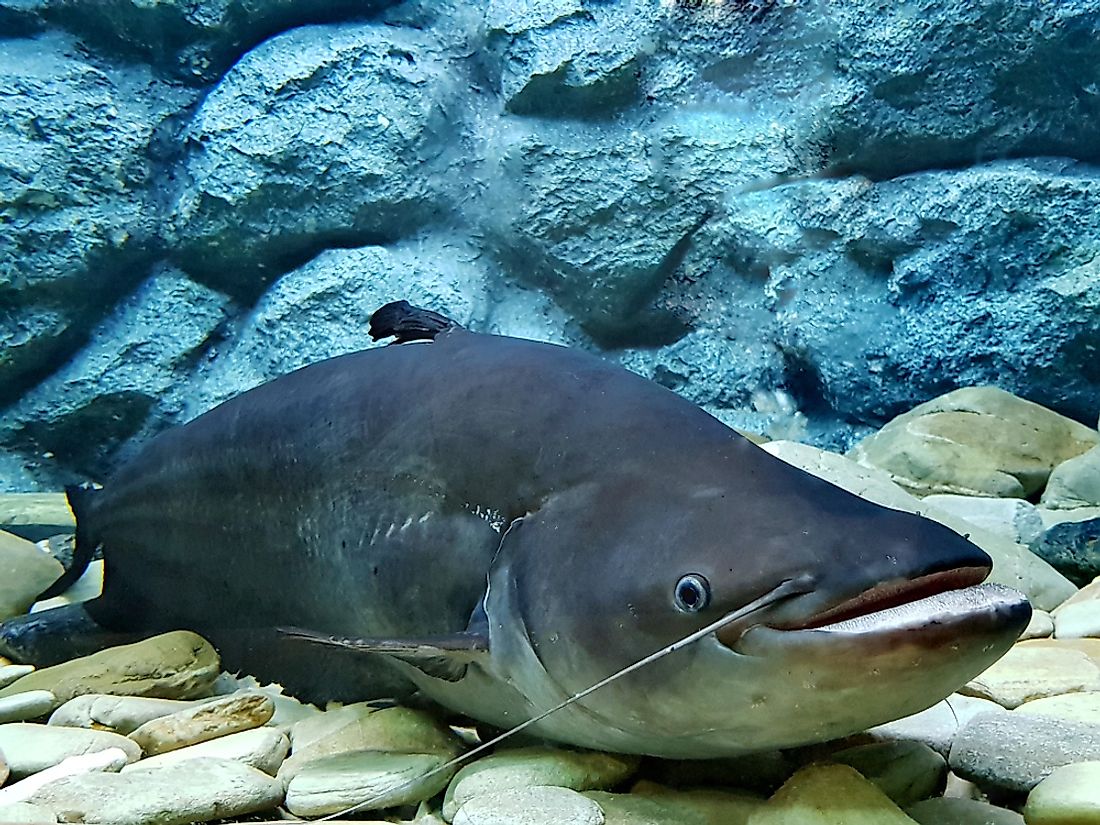Native Fish of Afghanistan

Afghanistan is located in South/Central Asia, covering an area of 252,000 square miles. Although the country is landlocked, it has diverse geographic and ecological features. This nation is covered in mountains, plains, valleys, and highlands with numerous rivers, streams, and lakes. Within these bodies of water are a wide variety of flora and fauna, including many different fish species. This article takes a look at some of the native fish of Afghanistan.
Schneider Riffle Minnow
The Schneider riffle minnow is a small fish that can grow to approximately 3.5 inches in length. Its preferred habitat is in slow moving rivers where it survives on a diet of insects, insect larvae, and small crustaceans. Breeding season for this fish species is between April and June.
Helicopter Catfish
The helicopter catfish can reach lengths of up to 96 inches (8 feet), although the average size of adults is 48 inches (4 feet) long. This species lives in lakes and deep, slow moving rivers. It is recognized by its silvery, white color and by its long whiskers. Its diet consists of smaller fish and amphibians. In some instances, it has been found with small birds and mammals in its stomach cavity. This fish breeds in shallow water, usually near the river banks, at the beginning of rainy season. Humans rely on this fish as a food source. Due to overfishing, its population has drastically declined and is now considered near threatened.
False Osman
Found in mountain rivers and streams, the false osman grows up to 13 inches long and can weigh as much as 10 pounds. Depending on its habitat, this fish species may rely only on aquatic vegetation or on smaller fish and mollusks for its diet. It is highly adaptable to its surroundings. The false osman is also a food source for humans.
Tibetan Stone Loach
The Tibetan stone loach has bony fins and short whiskers. It has been found at higher altitudes, approximately 17,100 feet above sea level, than any other fish. The habitat of this fish species includes rivers, streams, and lakes. Its appearance is silvery in color with dark spots all over its body and fins.
Turkestan Sisorid Catfish
The Turkestan sisorid catfish grows to between 6 and 9 inches in length. Dark in color, nearly black, this fish prefers to stay under rocks at the bottom of the riverbed. Its diet consists mainly of insect larvae. It has a wide, rounded head and body that grows thinner midway to the tail. It belongs to the genus of sisoridae, which are known to prefer fast-moving water.
Indus River Bagrid Catfish
Growing to a length of around 10 inches, the Indus river bagrid catfish has been found in Afghanistan, Pakistan, and India. Its diet consists of invertebrates and small fish. Breeding season for this species begins in June, ends in July, and takes place in shallow waters. Around the beginning of August, they migrate in groups to colder, deeper waters. It is unique to the rita genus in that it has a longer dorsal spine and smaller, wider-set eyes than other fish belonging to the same genus.
Giant River Catfish
The giant river catfish typically reaches lengths of around 15 inches, although some specimens have been documented as being as long as 59 inches (almost 5 feet). This fish is popular both for human consumption and for sports fishing, likely making its population vulnerable. It has a long, pointed head with eyes located in the front, rather than on the sides. Its diet consists of smaller fish.
Other fish native to Afghanistan include the Griffith’s stone loach, Helmand river stone loach, and Baluchistan stone loach.
Native Fish of Afghanistan
| Native Fish of Afghanistan | Scientific Name |
|---|---|
| Schneider Riffle Minnow | Alburnoides bipunctatus |
| Helicopter Catfish | Wallago attu |
| False Osman | Schizopygopsis stoliczkai |
| Tibetan Stone Loach | Triplophysa stolickai |
| Turkestan Sisorid Catfish | Glyptosternon reticulatum |
| Indus River Bagrid Catfish | Rita macracanthus |
| Giant River Catfish | Sperata seenghala |
| Griffith's Stone Loach | Triplophysa griffithii |
| Helmand River Stone Loach | Triplophysa farwelli |
| Baluchistan Stone Loach | Triplophysa brahui |











